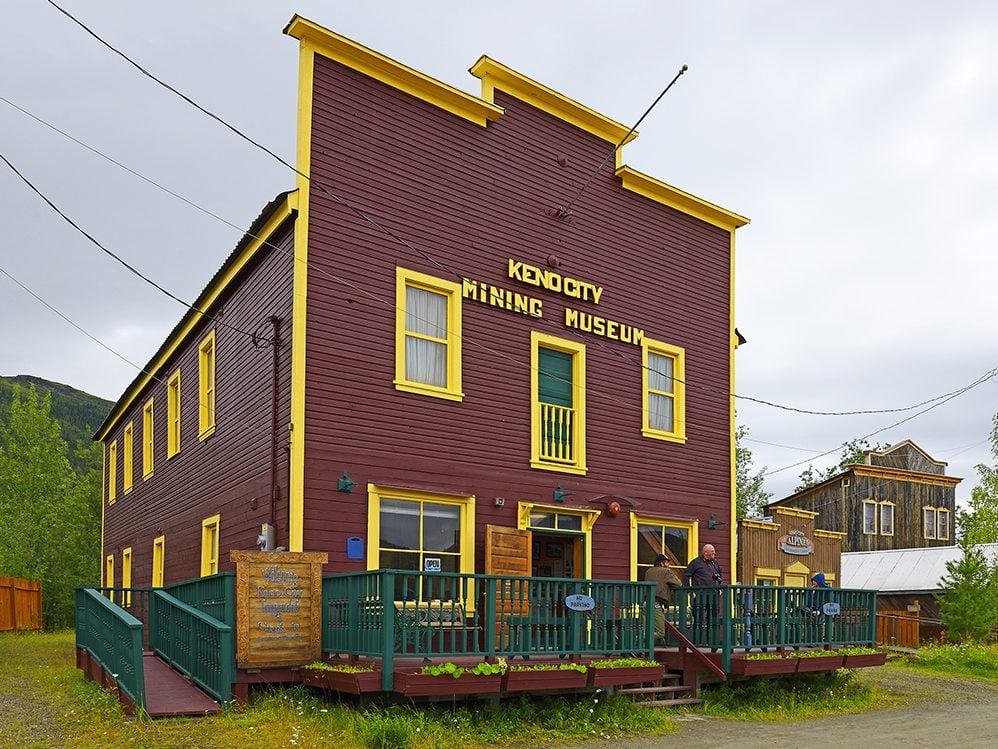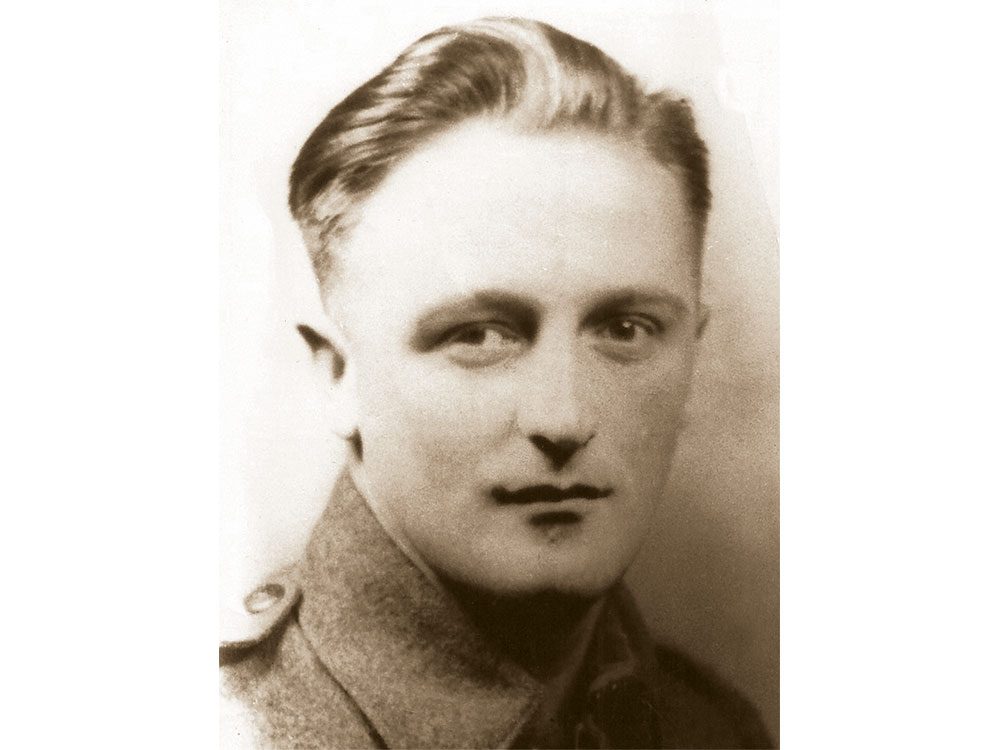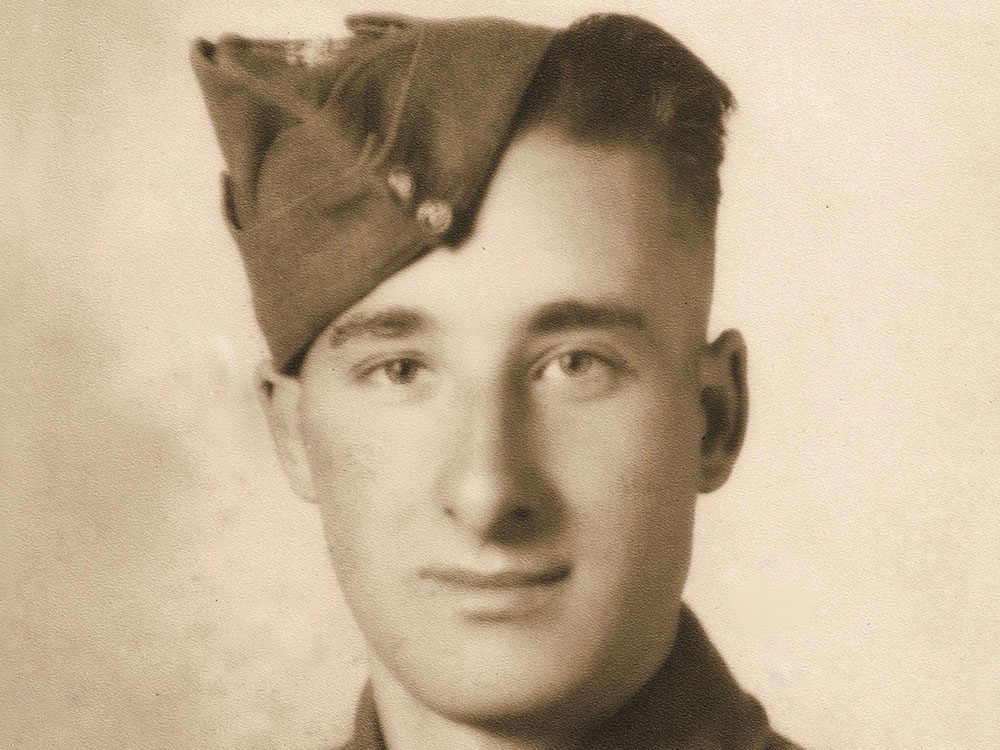
In conversation with Jean Chrétien
Reader’s Digest Canada: Your book, My Stories, My Times, comes out 25 years after you were first elected prime minister. What motivated this moment of self-reflection?
Jean Chrétien: When I’m sitting with family or friends after dinner, they often ask me questions about my 40 years in public life—and I find I have a lot of stories to tell. My grandchildren told me, “Grand-papa, these stories will disappear. Why don’t you write them down?” And so, for a full year, I wrote something every week. The subject varied, as if I had been writing a column for a newspaper.
You mention that writing is something you would do when you had tired of the “surrealist vagaries” of Donald Trump. Care to expand?
I’m very surprised by what’s going on in the United States. Like many others, I’m watching it on TV and, sometimes, I don’t enjoy it. So it’s better to return to my desk and gain back my serenity with my souvenirs, my stories.
What are your thoughts on living in the era of “alternative facts”?
In my time, to be accused of lying was a terrible attack. If you alleged somebody else in the House [of Commons] was doing it, that caused a big storm. The member [making the allegation] had to prove it or was suspended from the House. It doesn’t seem to be such a big problem today.
You chose Joe Clark, an old rival, to write the foreword.
Yes, and that’s why I asked him. I thought it would be a good message to send to people. We worked across the aisle from each other for more than 30 years. He was an opponent of mine all that time, but even when we had to challenge each other politically, we remained civilized.
The Trudeau government occasionally consults with you on current matters. How does that work?
I’m not advising them on a daily basis, but when they want to get my views on something, they call me. I have known Justin since he was a baby—I was sitting in the House of Commons next to his father when he was born. Justin is a different guy than I am, and as prime minister he has to do things his way. What’s important, though, is the values we share—values that have existed in our party for a long time.
Is there anything that stands out in that regard?
I was very pleased with the moves we made for the refugees from Syria. We took in a big number of them, and it was not a controversy in Canada.
Did you always dream of a life in politics?
My father was the one who wanted me to be a politician. When I told him that I wanted to be an architect, he said, “No, you will never be elected as an architect. You’re going to law school.” So I did. In those days, when your father said something, you did it.
Your father chose your career, and in the book, you write about how your mother chose your wife.
Well, I was very attracted to my wife, but it was my mother who did everything she could to make sure that we ended up together.
For insight into another Canadian icon, read our conversation with Peter Mansbridge!

A ghost town… with holdouts
My journey to the heart of the Yukon’s historic mineral wealth started with a question posed to a waitress at the Gold Rush hotel in Whitehorse: What’s the weirdest place in the Yukon?
Her answer was a patch of pay dirt around 470 kilometres north, past endless forests of spruce and golden-leafed aspen, at the end of a gravel road known as the Silver Trail. There lies Keno City, a gold rush–era relic with about a dozen full-time residents, tap water not fit for human consumption and two bars whose owners haven’t been on speaking terms for more than a decade.
Perched among hills rich in silver, zinc and lead, Keno City began as a Swedish prospector’s staked claim in 1919, its name inspired by a popular gambling game and intended to lure fortune-seekers with the promise of an ore-laden metropolis in Canada’s frigid northern reaches.
People made a go of it here for 70 years, as the region became one of Canada’s largest producers of silver. But in 1989, Keno was largely emptied by the closure of the United Keno Hill Mine. That turned the nearby community of Elsa into a ghost town and prompted even the most stubborn holdouts to rebrand their beloved mining outpost as a quirky testament to human tenacity.
“You walk into a place like Keno and you’re like: ‘What? How many people live here, 12?’” said Dirk Rentmeister, 57, a former miner who grew up in Keno and was drying out a freshly detached moose head in his driveway.
For the record, the population is 20, according to the 2016 census for the Keno Hill area, but that includes part-time residents like Rentmeister, who now owns the Silvermoon Bunkhouse motel, and returns each summer to capitalize on visitors’ desires for nostalgia, nature and all-terrain vehicle rides through the wilderness.
“We’re like one big unhappy family.”
While this dot on the map has seen prospectors, prostitutes, miners and bootleggers come and go, Keno serves as a lesson on the dangers of betting it all on resource extraction, the capricious industry that has left the region scarred by environmental contamination and economic collapse.
Since its well was damaged in 2015, the hamlet has relied on drinking water trucked in by the government. Officials found dangerous levels of uranium, arsenic and other minerals in the groundwater, contamination too costly to treat for so few residents.
“It’s a scary situation,” said Mike Mancini, the former director of the Keno Mining Museum, who now owns the only pizza joint for hundreds of kilometres. “How long will the government pay the bill?”
Still, residents have stuck around, and they refuse to consider leaving.
As a child, Mancini, 56, lived in a tarpaper shack in No Cash, a nearby station for the mine’s tramline, before his family moved to Keno City. He stayed after the mine shut down and helped transform an old clapboard dance hall into the museum, which houses artifacts like antique mining equipment, midcentury home appliances and funeral dresses.
Serving pizzas has helped Mancini make ends meet, but the lifestyle keeps him here, as do his neighbours.
“We’re like one big unhappy family,” he said. “Some people still don’t agree with things that happened 40 years ago, but if there’s an emergency, we come together.” Little love is lost between the owners of Keno’s two bars, however, which just happen to face each other across the unpaved main street.
On one side is the Keno City Hotel, a long-derelict maroon clapboard pile that Leo Martel bought 11 years ago and renovated, its first-floor bar now furnished with pool tables, a piano and a sign over the bar top reading, “I thought I was wrong once, but I made a mistake.”
On the other side lies the Sourdough Roadhouse, a pub that Jim Milley bought 10 years ago, crushing Martel’s dreams of a bar monopoly.
Theirs is a feud steeped in competition and fermented with age. Both first arrived in Keno City as young men. Both serve alcohol. And both nurse grudges that neither is willing to let go of.
“He backed into a liquor license,” said Milley, 63, a wiry chain-smoker with a long grey beard, as he stood on his pub’s front porch, several feet away from Martel’s hotel door. “Now we have two bars for 12 people.”
“I wanted that bar across the street before Jim,” the 66-year-old Martel said, his blue eyes narrowing as he sipped a beer in the hotel one evening. “He needs conflict.”
“Like time took a holiday in 1978 and never came back.”
Keno thrives by embracing its eccentricities. The village has no cellular service or stores, and the nearest police officers are stationed 60 kilometres away.
At times, according to locals, unusual characters show up, like the woman who wandered into town one winter and began burning library books to stay warm, and an ex-convict who came looking for a stockpile of buried guns and money he had heard about from a fellow inmate. (He never found it.)
In Mancini’s front yard, bushes have grown up among a collection of junked, rusting 1950s cars.
Back in the ’70s, he said, residents used to celebrate the end of the long winters by swapping partners. These days, they host a summer solstice party under the midnight sun at the top of Keno Hill, 1,825 metres above sea level, and end the season with a raucous Labour Day weekend festival known as Keno Gras, featuring costumes and a pig roast.
The town’s bohemian ethos has turned Keno City into something of a magnet for people looking to escape the constraints of the modern world.
“This place feels like time took a holiday in 1978 and never came back to work,” said Doug Tremblay, 59, who works for the territorial government in winter but spends summers panning for gold in rivers and streams, a hardscrabble method known as placer mining that has been attracting people to the Yukon for over a century.
Tremblay began placer mining a few years ago, a passion he admitted is stoked more by the thrill of discovery than the prospect of striking it rich.
“When you see gold rimmed along the bottom of a pan,” he said, “it’s better than sex.”
Explore more of Canada’s north thanks to this great Canadian bucket list.
© 2017 by New York Times Syndicate

Veteran Profile: Clifford Swarbrick
Clifford was born in Unity, Sask., and joined the Canadian Army in 1941. He served overseas with the Royal Canadian Army Service Corps as a truck driver for the 65th Tank Transport.
“We would haul tanks from one place to another. They would be battle-damaged or tanks that ran out of fuel… We couldn’t use our lights at night either—you just watched for the small slit of light from the rear of the truck in front of you. That’s tough when you are only feet away from one another and moving fast. If you were the first truck in convoy, good luck!”
Cliff was discharged in January 1946. After the war, he lived in Lacombe, Alta., where he passed away on September 12, 2014.
For more profiles by Veterans Voices of Canada, click here.

How Long Do Christmas Cookies Last?
If you’re an ambitious gift-giver and a proud home baker, you probably plan to do a lot of cookie-baking for Christmas. It’s helpful to know how to store the most popular cookies as well as how long each will keep. This guide will cover it all! (Here are 14 baking hacks for Christmas cookies you’ll wish you knew sooner.)
In general, baked cookies will be fine at room temperature for about three days, but only if stored correctly. For most kinds of cookies, there are essentially two ways to store them:
- in an airtight container at room temperature
- in an airtight container in the freezer
You can also refrigerate or freeze the dough, either as a batch or pre-portioned. Here’s the nitty-gritty details for each type of cookie:
- Drop cookies: These are probably the easiest of all Christmas cookies to make and store. Because drop cookies are usually quite sturdy, they can be stored stacked on top of each other without fear of crushing the bottom layer. They can be kept at room temperature for about three days before they start to lose their lustre. If you’d rather freeze the dough, it can be stored in the freezer for up to six months.
- Sliced cookies: Icebox or sliced cookies keep similarly to drop cookies. You can freeze the well-wrapped logs of dough for six months (thaw in the refrigerator overnight before handling) or refrigerate them for three days before slicing and baking. The baked cookies can be frozen for up to six months, and they keep just fine at room temperature for three days.
- Cutout cookies: Cutout cookies are a Christmas cookie mainstay, but they can be a little finicky. One option is to simply freeze the dough; as with other buttery doughs, this works for up to six months. You can also freeze the baked but undecorated cookies for six months. Do this by placing them in a single layer on a baking sheet and freezing them until completely frozen. Then, carefully stack them in a hard-sided container until you’re ready to decorate. Since these cookies are often quite thin, the finished batch won’t keep long at room temperature—they tend to get very crumbly and the frosting often bleeds or melts. Try to keep them out for no more than two days.
- Bar cookies: These must be baked immediately; there’s no freezing or refrigerating option for the dough. After they’ve baked, bar cookies can be stored at room temperature in the pan in which they were baked, covered tightly with a lid or plastic wrap. They’ll keep this way for three days. Alternatively, you can wrap a block of baked bars in plastic wrap and foil and freeze them for up to six months.
- Twice-baked cookies: Cookies like biscotti that are baked twice and therefore extremely crispy and dry can be kept at room temperature longer than other kinds of cookies, up to two weeks. As with bar cookies, it’s best to bake this dough immediately. You can freeze the baked twice-baked cookies; they do lose some of their crispness but can be brought back to life with a few minutes in a 150° C oven.
- Cookie press cookies: Cookies that are never meant to be tender or chewy will last longer than their softer cousins. Of course, they’re best when eaten a few days after baking, but can last for two weeks or so when stored in an airtight container.
How Do You Store Cookies?
- Freezing: Making dozens and dozens of cookies is a lot of work. By freezing your dough as you make it, you can start as far as six months in advance. You can tightly wrap or cover the dough and store in the freezer, or pre-portion it into disks and freeze those. When you’re ready to bake, simply thaw the dough in the refrigerator and proceed. For people who thrive on planning ahead, this is definitely the preferred method!
- Refrigerating: You can refrigerate your finished dough for up to three days as long as it’s very tightly wrapped. The danger here is that odours and moisture from the other items in the fridge can make their way into the dough, which can result in cookies that taste funky. (Here’s the secret to making foolproof fudge!)
General Tips
- Never store cookies before they’re completely cool; trapped heat will make them soggy.
- Store different kinds of cookies separately. This way, soft cookies won’t make crisp cookies limp, and vice versa. There’s also a risk of flavours melding together, which might not be so bad for a batch of peppermint cookies and a batch of chocolate cookies but definitely wouldn’t be great for something like peppermint and lemon.
- Don’t stack delicate cookies or cookies with soft frosting on top of each other—those are best stored in a single layer. Drop cookies and twice-baked cookies, however, can safely be layered between sheets of wax paper.
- You can help soft cookies retain their moisture by storing them with a slice of bread or a piece of apple.
- Due to their longer shelf lives, twice-baked cookies and cookie press cookies are your best bets for shipping to a faraway friend. Not only are they usually hearty enough to survive the journey, but they’ll taste relatively fresh once received.
- Baked cookies should never be refrigerated unless the recipe specifically recommends it.
You should be confident that every batch stays fresh for as long as possible. Happy baking!
Next, check out the secret ingredient for the best brownies ever.

The importance of good neighbours
My kids sit in Gee’s living room and reverently lift antique Christmas ornaments out of a well-loved cardboard box. They gasp when they discover a tiny stuffed cat. They giggle at Raggedy Ann, who is a foreign character to them. Gee stands beside them, quietly explaining each treasure. She tells me that she and Tom built their ornament collection piece by piece during each year’s after-Christmas sale. She smiles as we leave with the box. Her precious heirlooms, gathered over a lifetime, have found a new home.
We first met Tom and Gee in the early days of our marriage. Someone had been returning our garbage cans to the garage each garbage day, and Jim and I had wondered who. Then one day we spotted him: an elderly man who lived across the street. (This random act of small town kindness will warm your heart.)
I baked cookies and left them on a stool outside the garage with a thank-you note. When we got home from work that day, a typed letter had replaced the gift. The letter was from Tom and explained how he had come to walk the neighbourhood on garbage day, returning cans for people he barely knew. Back when he’d been fighting a war I wasn’t alive to see, his young wife, Gee, had found herself living alone. Neighbours had taken the time to handle her garbage cans so she didn’t have to, and he never forgot. Now he paid it forward by doing the same for all of us. (It was also his way of sneaking a smoke while Gee wasn’t looking.)
A few years after we’d moved in, Tom died. We photocopied that letter and attached it to one of our own for Gee. We told her how special Tom had been to us, how we grieved for her, how thankful we were to have known him—the inadequate words that come with condolence. She wrote back and told us she still talked to Tom every day. When Gee invited us over to look through Christmas ornaments, I realized how hard it must be to part with that box, a piece of Tom.
These days, we’re piling up boxes of our own. We’re planning a move. The house that seemed so huge six years ago is filled to capacity with furniture and books and toys and, of course, people. We know it’s time to go, and yet we can’t seem to stick the For Sale sign up on the lawn. Gaining a third bedroom and maybe an office sometimes seems like a lousy trade for all we stand to lose. (Check out these simple acts of kindness you can do in two minutes or less.)
It’s not just Gee. It’s the man who lets our kids pick peaches off the tree in his front yard. It’s the ladies who call Jim when their pool filter breaks and leave overflowing baskets for our kids on Easter. It’s the corrections officer directly across from us, who smiles and waves and makes me feel a little safer when Jim is away.
The moving boxes are still neatly packed in our basement, but Jim and I agree to wait until January. This Christmas, we’ll decorate our tree with Gee’s ornaments, out of the box that is labeled in Tom’s handwriting. Maybe I’ll talk to him just as Gee still does. Thank you, I’ll say. For teaching us what it means to be a neighbour.
Next, check out these extraordinary real life stories about the kindness of strangers.
Nicole Burrell is a Reader’s Digest reader from northern New Jersey.

Is Camilla Parker Bowles a princess?
Maybe you’ve already read about how Kate Middleton and Meghan Markle aren’t technically called princesses—if you haven’t heard, learn the difference between a duchess and a princess. But Prince Charles’ late ex-wife Princess Diana did use “princess” in her title, so why doesn’t his current wife, Camilla Parker Bowles, use it too? The reason has nothing to do with royal rules, but a touching personal choice.
A quick explainer on British royal titles: For Prince William and Prince Harry, the “prince” titles before their names are actually lower ranks than the ducal titles that Queen Elizabeth II gave them as Duke of Cambridge and Duke of Sussex, respectively. Their style and titles of “HRH Prince” were inherited because they are male-line grandchildren of the monarch, meaning their wives could be called, say, Princess William of Wales, but not Princess Catherine, had they not been granted dukedoms upon marriage.
Diana married Prince Charles, The Prince of Wales, a title that is typically granted to the male heir to the throne by the reigning monarch. As the wife of The Prince of Wales, Diana had every right to be called The Princess of Wales (and later after their divorce, Diana, Princess of Wales) as she took the female styling of her husband’s highest-ranking title. References to the late princess as “Princess Diana,” while well-meaning, are actually the wrong use of her title since she was not a royal princess from birth.
Fast-forward to 2005, when Camilla Parker Bowles married her longtime lover, Prince Charles. Even though it was eight years since Princess Diana’s death, Lady Di was still the “People’s Princess” in the public mind. Many still hadn’t embraced Camilla or forgiven her for what they saw as tearing apart Charles and Diana’s marriage. In the weeks around the 2005 royal wedding, 57 per cent of Britons didn’t want Camilla to become Queen one day, according to a Gallup poll. (Find out why Prince Charles didn’t marry Camilla in the first place.)
Knowing that the public still held Diana in high esteem, Camilla didn’t want to step on any toes, according to Robert Jobson in his book Charles at Seventy: Thoughts, Hopes and Dreams. “This book’s exclusive insider source of the story had been spot on… that Camilla, when married, would not take the title HRH The Princess of Wales, even though it was her right to do so, as it would be insensitive and cause undue hostility with Diana, Princess of Wales, in mind,” he writes. “She uses the title HRH The Duchess of Cornwall instead, as the prince was Duke of Cornwall, which does not reduce her royal rank. It is a title of convenience.” (Don’t miss the story of how Princess Diana confronted Camilla about the affair.)
Camilla’s choice of title was a sign of respect for Diana’s legacy, and she continued making it public that she wasn’t trying to replace Diana. When Camilla and Charles got married, an official announcement stated she had no intention of becoming Queen Consort (and would adopt the title of Princess Consort, instead) when Charles took the crown. A poll 10 years later showed that only 15 per cent of British adults wanted Camilla to become Queen when Charles is crowned king, even though the royal family has switched its position from “definitely not” to “maybe.”
In a 2010 NBC News interview, Prince Charles admitted his wife “could be” given the title of “Queen,” according to the Telegraph. More recently, the Week pointed out that Charles and Camilla had removed the question “Will the Duchess become Queen when The Prince becomes King?” from their FAQ page, sparking rumours that they might have changed their tune about keeping her from being Queen.
Typically, the wife of a British king becomes “Queen Consort,” so only time will tell if she’ll break tradition to avoid a stir, or if the public will warm up to Camilla enough that she can play by the rules without risking much outcry. Or she could always give herself the royal treatment and ignore the naysayers. After all, she’ll have the king himself backing her up.
Next, here are 50 things you didn’t know about the royal family.

Behind Queen Elizabeth’s future plans
The British monarchy planted its roots for more than 1,000 years, and there are some staunch traditions that go along with that. One of the strongest senses of duty for the head of state is to serve for life. That might have been easy enough when kings would die in battle or from sudden disease, but 65 years since her coronation, Queen Elizabeth II is the United Kingdom’s longest-reigning monarch. The 92-year-old is healthy but slowing down, which begs the question: What will she do when she’s just not up for royal engagements anymore?
Among royal insiders, it’s clear that the Queen will never formally step down. Only one British monarch has ever willingly abdicated the throne—and ironically, that person was Elizabeth’s uncle, King Edward VIII.
When Queen Elizabeth was born, there was slim chance that she’d ever become monarch until King Edward VIII fell in love with Wallis Simpson, who’d already been married twice. There was so much social and political objection to the king marrying a divorcee (even King Henry VIII had his own marriages annulled and was never divorced) that Edward stepped down in 1936 so he could be free to marry Simpson. His brother and Queen Elizabeth II’s father, King George VI, took his place on the throne, putting young Elizabeth in line for the crown. (Check out 50 things you didn’t know about the royal family.)
Sources say watching her uncle step down influenced Queen Elizabeth’s views on the monarchy, and she sees abdication as going against her country. The oath and the constitution don’t specify a lifelong commitment, but the Queen saw it as a vow to fulfill her duties until death, and she isn’t about to let a little thing like her 90s get in her way, according to Robert Jobson in the book, Charles at Seventy: Thoughts, Hopes and Dreams. That said, she won’t necessarily keep being the star of the show.
“One senior aide told me that the Queen has given the matter of her passing years considerable thought and believes that, if she is still alive at ninety-five, she will consider passing the reign to Charles,” Jobson writes. “Abdication, however, is not even a consideration.”
Queen Elizabeth II could simply let Prince Charles unofficially take over some of her responsibilities—as he’s already started to do—or she might plan on “dusting off” the Regency Act, according to Jobson. In that case, the Queen would name her son Prince Regent, putting him in charge of her official duties while she’d get to keep her title as Her Majesty the Queen. Either way, he wouldn’t become King Charles until she passed away. (Here’s what Queen Elizabeth would prefer we not know about Prince Charles.)
“She would never want to do anything, or be seen to do anything, that would harm the monarchy, and that includes going on too long,” a senior aide told Jobson. “If she felt her age was in any way damaging the monarchy, she would act accordingly.”
Don’t miss these other reasons why Queen Elizabeth II will never give up the throne.

How to Make the Best Sweet Potatoes
Several years ago, a family friend handed me his recipe for sweet potatoes—handwritten on a giant recipe card with the vaguest instructions I’ve ever seen. I skimmed it and did a double-take. See if you can catch what stopped me in my tracks:
Put about 1/2 stick butter in a large frying pan with plenty of light brown sugar. Add eight to 10 slices of orange. Cook for a few minutes, then add 2 small cans of sweet potatoes, preferably whole. Keep turning the sweet potatoes in the sugar mixture, adding orange juice so they won’t stick. Cook slowly for at least one hour.
Sweet potatoes and orange? I never would’ve thought to combine the two. (Don’t miss these 50 fabulous fall recipes.)
How I Made the Recipe My Own
I decided to fudge my way through the recipe. I jotted a few key notes to clarify as I went:
- Turns out he wasn’t kidding about needing a large skillet.
- “Plenty” of brown sugar ends up being enough that you start to get a gooey sauce, but not so much that it burns! (I still haven’t committed to a specific quantity.)
- Ten slices of orange are tastier than just eight.
- I couldn’t find two small cans of sweet potatoes, so I went with one 28-ouncer. And I learned the hard way: Drain the syrup from the can before adding the sweet potatoes to your skillet.
- The ideal amount of orange juice ends up being two to three cups.
- Be prepared to perch by the stove, stirring often!
The Results
After much guessing, the result was… amazing! The dish tastes kind of like candied yams with a delightfully bright twist, and the texture is similar to mashed potatoes. True to my cooking style, I never wrote down any more detail than what you see here, and I’m sure I’ve never made it the same way twice.
Still, this heirloom side dish has become a must for the fall season. My sister and her kids love it so much, it’s now on their table every year, too.
Next, find out the secret ingredient for the best brownies ever.

What is your purpose in life?
Every January for the past 20 years, I have taken a few moments to ponder the answer to the big question, “What is the meaning of life?”
It’s one of those enormous questions that are so important—philosophically and practically in terms of how we live our lives—and yet we never stop to really think about the answer. Given that you might be able to formulate your response in less than a minute, the wisdom-to-effort ratio for this philosophical exercise could not be more advantageous. I tend to ponder such things as the creator of the Wisdom Project, a collection of writings about the wisdom in everyday life experiences.
Doing this simple exercise might even help you live longer. According to two separate studies published in 2014—one with 9,000 participants around age 65 and another with 6,000 people between 20 and 75—those who could articulate the meaning and purpose of their lives died later than those who saw their lives as aimless. It didn’t seem to matter what meaning participants ascribed to their lives, whether it was personal (such as happiness), creative (such as making art), or altruistic (such as making the world a better place). It was having an answer to the question that mattered. (Check out these 30 simple acts of kindness you can do in two minutes or less.)
The connection to longevity could be causal—having purpose may help one cope with daily stress, as other research has shown. But it could also be that those who think about life’s meaning are more likely to do other activities that promote good health. (Here are 13 things you need to know about optimism.)
The reason I ask this question year after year is that my answer changes over time, which I find interesting and insightful. There is no objectively correct answer, I believe—only answers that are right for you at any given time.
Great thinkers have given the question thought, so you can look to the words attributed to them for inspiration. Plato, the Greek philosopher who lived more than 2,300 years ago, concluded that only “love can light that beacon which a man must steer by when he sets out to live the better life.” Russian author Leo Tolstoy wrote, “The sole meaning of life is to serve humanity.” Albert Einstein put it this way: “Only a life lived for others is a life worthwhile.” Martin Luther King Jr. framed the sentiment as a question: “Life’s most persistent and urgent question is, ‘What are you doing for others?’” And the Dalai Lama added, “If we find we cannot help others, the least we can do is desist from harming them.”
Others came to the same conclusion, in their own words. For instance, Scottish rugby legend Nelson Henderson put the notion poetically when he said, “The true meaning of life is to plant trees under whose shade you do not expect to sit.” And actress Whoopi Goldberg’s meaning-of-life metaphor was to “throw little torches out to lead people through the dark.”
My favorite answer, though, is the Zen-like circular reasoning attributed to writer Robert Byrne, who put it, “The purpose of life is a life of purpose.” (These 16 quotes from Stephen Hawking might lead you to the meaning of life.)
Some have concluded that life’s meaning is subjective. “There is not one big cosmic meaning for all,” author Anaïs Nin wrote in her diary. “There is only the meaning we each give to our life, an individual meaning, an individual plot, like an individual novel, a book for each person.”
I agree, which is why I recommend formulating your own answer. Taking a few moments to record your response to the question “What is the meaning of life?” is the kind of simple exercise that effectively adds meaning to your life.
And then I suggest answering it every year. Looking back at how your thinking has evolved and been influenced by experience tells you something more about yourself. Cumulatively, it gets you closer to a deeper self-understanding.
In 1997, my answer was “the discovery, pursuit, and attainment of one’s bliss,” inspired by myth expert Joseph Campbell. A year later, it was to make “the world a better place.”
In 2002, the year I got engaged, it was simply “love.” And the year we conceived our oldest daughter, it was the less romantic “continuation of one’s DNA to the next generation.” But most years, my answer is some combination of love, legacy, happiness, experience, and helping others.
If you do the annual “meaning” exercise, I suggest not looking at past answers before answering anew. I write them down on the same now-yellowing piece of paper and keep it someplace safe.
The last use of this experiment is to try to turn your answer into action. If you conclude, as Tolstoy and Einstein did, that the meaning of life is helping others, that should help motivate you to do more of it. If “love” is the answer, then love more. If it’s “find your bliss,” then get searching for it.
This is not a theoretical exercise. Whatever small step you take toward finding the meaning of life is a step toward a more meaningful, and longer, life.
Next, find out how not being a people pleaser can change your life for the better.

Veteran Profile: Charles A. Muise
Born in Hubbard‘s Point, N.S., on August 3, 1921, Charles joined the Princess Louise Fusiliers in March 1941. Three months after being wed, he shipped out, serving in England, France, Italy, Belgium and Holland for more than three years.
“On our way to Italy on board the Monterey, we were attacked by German planes and U-boats. The Santa Elena sailing alongside us was torpedoed and began to sink. Amid the confusion and panic, we picked up the survivors.”
Charles was discharged in January 1946. Still in good health, he lives in Tusket, N.S., with Anne, his wife of 76 years. They have eight children.
For more profiles by Veterans Voices of Canada, click here.